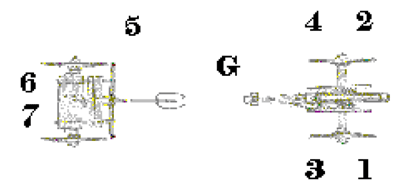
Matilda Newport and the Miracle at Crown Hill
By Mohamedu F. Jones, Esq.
The Perspective
Atlanta, Georgia
December 5, 2003
I drafted the PRC Decree that ended Matilda Newport Day. In November
1980, I was a senior civil servant in the Ministry of State for Presidential
Affairs. A few months before, I had been a professional staff member
of the National True Whig Party of Liberia. Dr. George Boley, the Minister
of State, and Mr. Emanuel Shaw, Deputy Minister of State had sought
me out in May 1980 to come to work in the Mansion, "for the good
of our country." I had worked with Shaw and Boley the year before
on a Task Force appointed by President Tolbert to reform the True Whig
party, and by definition of the circumstances, the political process
in Liberia - which effort had obviously failed. I accepted the Mansion
position for the "good of the country", despite my political
misgivings about what had happened in Liberia, and my realization as
a student of politics, that the ramifications of the coup would go beyond
anything we could envision.
In any event, I was working in the Mansion, in November 1980, and had
noticed that despite all the rhetoric, the military government had celebrated
all the historical holidays. In November, the question of "Matilda
Newport Day" came to my mind and I raised it with Deputy Minister
Willie Givens, who in turn raised it with Dr. Boley. Without telling
me what to do, Boley sent instructions through Givens to tell me to
draft a proposed decree.
As part of my young man’s "bluff," I had started smoking
a pipe while in college. I can still remember while in Cedar Falls,
Iowa, smoking my pipe one day, the thought came to my mind in a moment
of random thinking as to whether, a pipe could light a cannon. Nearly
a decade later, I was instructed to prepare a draft Decree that dealt
with the very issue of a pipe and a cannon. Since it was not clear to
me whether Boley wanted the holiday to continue or be abrogated, I prepared
a draft with alternative proclamations. In the end, after intense debate
in the PRC and the Ministry of State, Matilda Newport Day was ended.
Regardless of what one thinks about the whole Matilda Newport story,
in terms of the politics of it, and its meaning of our nation, when
one considers the practicality of it, Matilda Newport could not have
fired a cannon with flames from her pipe. Research into U.S. civil war
cannons, which if anything, one would consider to be technologically
more advanced then Newport’s cannon, illustrate why this story
simply has no foundation:
|
Firing procedure for a Civil War six pound cannon
|
 |
#3 has on his left thumb a thumbstall. On the back of the cannon is a vent that he must cover while #1 pushes the sponge rammer into the cannon. If not, any remaining powder may ignite and #1 looses an arm. The cannon gets very hot, thus the leather thumbstall. The #5 man delivers the round to number 2. Note #2 has his back to the enemy to protect the round from being hit by a bullet.
After #2 loads the round in the barrel and steps back, #1 rams it home. Notice #3 is still covering the vent hole. Even though the barrel has been sponged, there still exists the chance sparks could ignite the powder bag, that is part of the round. If this happens, the rammer, and the right arm of #1 are heading toward the enemy. When finished #1 steps out.
Number #3 now steps back to the hand spike for any last minute corrections by the gunner. The gunner has been sighting the weapon during this time, by raising or lowering the barrel. The gunner gives a touchdown signal that tells #3 he is set. Much of the procedure is done by drill, using signals, not sounds. Battle noise would drown out many commands, endangering the crew.
At the command "Ready" # 3 and #4 step inside the wheel base. #1 and #2 step back and make their bodies flat to the end of the barrel. #3 takes out a vent pick and pokes a hole in the powder bag. Each round has a powderbag attached which when lit, explodes and sends the projectile down range. #4 has prepared a friction primer and attached it to his lanyard. The wire pulls thru the primer, and sends a flame down into the powderbag. The explosion sends the projectile down field.
After the hole has been poked, #4 sticks the friction primer into the vent hole, #3 places his hand over the lanyard. As #4 backs away to stretch the lanyard, #3 makes sure if #4 trips and pulls at the lanyard, the cannon does not prematurely go off. If #4 does start to trip, he drops his end of the lanyard immediately. Upon reaching the end of the lanyard, #4 sets his feet and shakes his head to #3. This tells #3 it is clear to step back to his position.
#4 turns away from the cannon to protect himself from the snapping lanyard. #1 and #2 watch the end of the barrel to ensure the cannon fires. In battle, smoke and noise sometimes disguised the individual cannon firing noise. It was absolutely necessary to make sure the cannon fired. #6 and #7 observe the firing. It was their job to get the round that is specified by the gunner, set the fuse if necessary, and give it to #5.
If Matilda Newport did fire a cannon on Crown Hill that day, it was a miracle.

